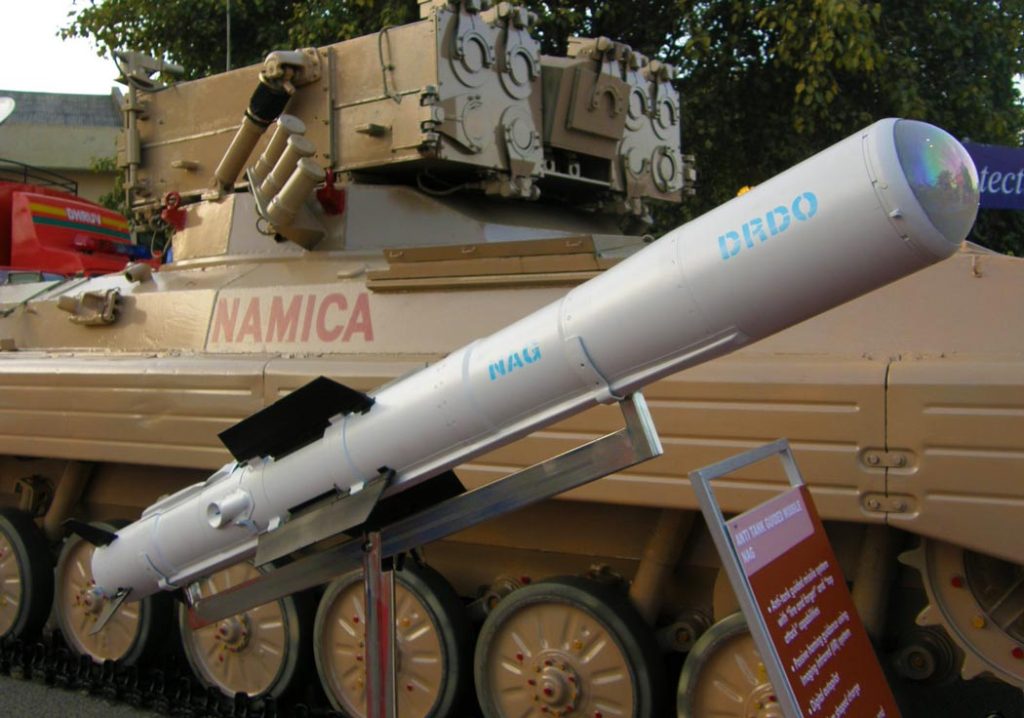
To modernize its mechanized forces, the Indian Army is set to acquire the cutting-edge Nag Missile System (NAMIS) and approximately 5,000 light vehicles, following contracts worth ₹2,500 crore signed by the Ministry of Defence on March 27.
The deals, inked under the ‘Buy (Indian-IDDM)’ category, spotlight India’s drive for self-reliance in defense manufacturing while enhancing operational readiness along its diverse terrains.
Why NAMIS and Light Vehicles?
The star of the procurement is the NAMIS Tracked version, a third-generation anti-tank weapon system developed by the Defence Research and Development Laboratory (DRDO). Valued at ₹1,801 crore, the contract with Armoured Vehicle Nigam Limited (AVNL) will see this fire-and-forget missile platform, mounted on a BMP-2 chassis, integrated into the Army’s mechanized infantry.
Designed to pierce enemy armor with precision, NAMIS boasts advanced sighting systems for superior lethality, promising to redefine battlefield dynamics against adversarial threats.
Complementing this firepower upgrade, the Ministry also finalized agreements with Force Motors Ltd. and Mahindra & Mahindra Ltd. for around 5,000 light vehicles. These modern machines, engineered with enhanced engine power to handle an 800-kilogram payload, aim to bolster troop mobility across rugged landscapes—from icy Himalayan heights to arid desert expanses. The dual procurement reflects a strategic focus on agility and firepower, key pillars of India’s military modernization amid evolving regional security challenges.
Defence Secretary Rajesh Kumar Singh, who oversaw the signing, hailed the move as a milestone in the ‘Aatmanirbhar Bharat’ initiative. ‘These contracts not only equip our forces with state-of-the-art tools but also fuel indigenous industry,’ he said, noting the potential for thousands of direct and indirect jobs, particularly in the MSME sector, through component manufacturing. The NAMIS project alone involves collaboration with over 200 local firms, amplifying its economic ripple effect.
The timing is telling. On March 27, the Army showcased its growing arsenal during a ceremonial event in Pune, hinting at the integration of such systems into its operational playbook.
With tensions simmering along the Line of Actual Control and insurgent threats in border regions, the NAMIS—capable of striking targets beyond 4 kilometers—offers a decisive edge. Meanwhile, the light vehicles will streamline logistics, ensuring rapid troop deployment in areas where heavier transports falter.
This isn’t the Army’s first brush with NAMIS. Displayed during the 75th Republic Day Parade in 2024, the system has been lauded as one of the world’s most sophisticated anti-tank platforms. Its tracked design, paired with the light vehicles’ versatility, aligns with lessons from recent global conflicts, where mobility and precision have proven paramount. The Army’s broader modernization push—evidenced by contracts worth ₹1.4 lakh crore signed this fiscal year—shows a shift from legacy systems to homegrown innovation.